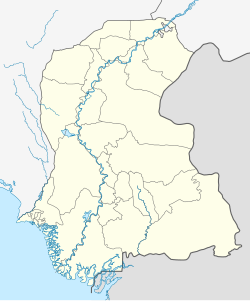| Siege of Debal | |||||||||
|---|---|---|---|---|---|---|---|---|---|
| Part of Umayyad campaigns in India and Umayyad conquest of Sindh, Muslim conquests in the Indian subcontinent | |||||||||
| |||||||||
| Belligerents | |||||||||
| Umayyad Caliphate | Kingdom of Sindh | ||||||||
| Commanders and leaders | |||||||||
| Muhammad ibn al-Qasim | Unknown (nephew of Raja Dahir) † | ||||||||
| Units involved | |||||||||
| 6,000 Syrian Cavalry 3,000 Camelry Unknown number of Arab soldiers | 4,000 Rajputs 3,000 Brahmins | ||||||||
Location of Debal, Karachi | |||||||||
The Siege of Debal, also known as the Siege of Debul, took place in the autumn of 712 AD, in which the Umayyad forces under Muhammed Ibn al-Qasim besieged Debal, a city under the Brahmin dynasty of Sindh ruled by Raja Dahir. The Umayyads defeated the inhabitants of the order on the order of Governor of Iraq Al-Hajjaj and captured it.


